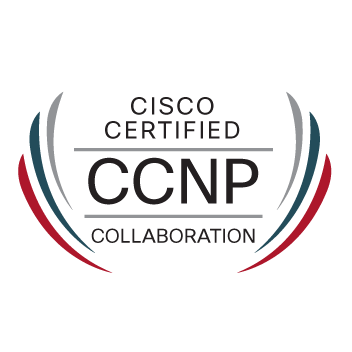- Cisco Community
- Technology and Support
- Networking
- Switching
- How many Broadcast & Collision Domains??
- Subscribe to RSS Feed
- Mark Topic as New
- Mark Topic as Read
- Float this Topic for Current User
- Bookmark
- Subscribe
- Mute
- Printer Friendly Page
How many Broadcast & Collision Domains??
- Mark as New
- Bookmark
- Subscribe
- Mute
- Subscribe to RSS Feed
- Permalink
- Report Inappropriate Content
02-11-2025 01:04 PM - edited 02-11-2025 02:29 PM
- Mark as New
- Bookmark
- Subscribe
- Mute
- Subscribe to RSS Feed
- Permalink
- Report Inappropriate Content
02-11-2025 01:18 PM
I counted 4 broadcast domains and 10 collision domains.
*** Please Rate All Helpful Responses ***
- Mark as New
- Bookmark
- Subscribe
- Mute
- Subscribe to RSS Feed
- Permalink
- Report Inappropriate Content
02-11-2025 03:53 PM
@liviu.gheorghe wrote:
I counted 4 broadcast domains and 10 collision domains.
BTW, I agree on the 4 broadcast domains (basically ports of the router, assuming router isn't bridging).
But as to 10 collision domains, my count is from 5 (hubs requiring HD) up to 12, depending on whether switch/bridge port in HD or FD mode.
Here's what I see for collision domains. Red being required. Green depending on duplex mode.
How did you obtain a count of 10?
- Mark as New
- Bookmark
- Subscribe
- Mute
- Subscribe to RSS Feed
- Permalink
- Report Inappropriate Content
02-12-2025 12:09 AM - edited 02-12-2025 12:17 AM
I overlooked the two PC's on the bottom connected to the switches. You are correct - it should be 12 collision domains.
The way I see it - even if the links between bridge/router/switch are operating in full duplex which means that no collisions are present on those segments, they are still regarded as collision domains being ethernet ports and CSMA/CD can still apply (if both ends of the link are configured for half duplex or only one end by mistake).
*** Please Rate All Helpful Responses ***
- Mark as New
- Bookmark
- Subscribe
- Mute
- Subscribe to RSS Feed
- Permalink
- Report Inappropriate Content
02-12-2025 03:04 AM - edited 02-12-2025 03:09 AM
"The way I see it - even if the links between bridge/router/switch are operating in full duplex which means that no collisions are present on those segments, they are still regarded as collision domains. . ."
Personally, if the link is running FD, I believe calling it a collision domain is misleading because collisions are not possible (excluding misconfigurations or non standard Ethernet [if I remember correctly, FD was an option for FE, and HD not an option for 10g]) and CSMA/CD is no longer being used. On all those non hub connected links, in theory, I could use fiber Ethernet, and we wouldn't call them CD segments.
That said, such copper Ethernet FD segments are still more commonly called CD segments but also with a footnote that when FD, collisions will not happen (nor CSMA/CD being used).
I suspect, having personally having lived through switches, initially, only supporting HD, the CD reference just "stuck" when actually not really applicable.
(My favorite example, when I entered the industry, experienced IBM programmers would ask for the "green" card, but at the time it was actually a "yellow" card. Basically, 10 years earlier, for the 360 series, the card was green, but for the, then current, 370 series, it was yellow. Oh, and I recall about 10 years later for the 390 series, it was no longer a card, but a booklet. But, also by that time, most programers no longer needed machine instructions reference material.)
Also from at the time Cisco introduced FD FE, they often emphasized it was 200 Mbps, but that didn't seem to catch on, as most continued to refer to a FE as 100 Mbps regardless whether running HD or FD.
- Mark as New
- Bookmark
- Subscribe
- Mute
- Subscribe to RSS Feed
- Permalink
- Report Inappropriate Content
02-12-2025 02:29 PM
You are correct. It doesn't really make sense to name an Ethernet segment a Collision Domain if it operates in FD and collisions are not possible.
Very nicely put - "having personally having lived through switches, initially, only supporting HD, the CD reference just "stuck" when actually not really applicable".
*** Please Rate All Helpful Responses ***
- Mark as New
- Bookmark
- Subscribe
- Mute
- Subscribe to RSS Feed
- Permalink
- Report Inappropriate Content
02-11-2025 01:27 PM
Is this a student exercise? If so, how may do you, @sumanthssmsg , think and why?
BTW, to answer the number of collision domains, you'll need to identify whether any link w/o a connection to a hub, is running in half or full duplex mode.
- Mark as New
- Bookmark
- Subscribe
- Mute
- Subscribe to RSS Feed
- Permalink
- Report Inappropriate Content
02-12-2025 05:29 AM
@sumanthssmsg it is related from devices
If connected without a router: 1 broadcast domain, 18 collision domains.
If connected via a router: 2 broadcast domains, 18 collision domains
Thanks!
- Mark as New
- Bookmark
- Subscribe
- Mute
- Subscribe to RSS Feed
- Permalink
- Report Inappropriate Content
02-13-2025 11:30 AM
"If connected without a router: 1 broadcast domain, 18 collision domains.
If connected via a router: 2 broadcast domains, 18 collision domains"
@Joshqun Ismayilov are you looking at a different topology?
Could you explain how you got the counts you did?
- Mark as New
- Bookmark
- Subscribe
- Mute
- Subscribe to RSS Feed
- Permalink
- Report Inappropriate Content
02-13-2025 11:41 PM
Yes, this is for a different topic )
@Joseph W. Doherty is correct //
Thanks!
Discover and save your favorite ideas. Come back to expert answers, step-by-step guides, recent topics, and more.
New here? Get started with these tips. How to use Community New member guide



